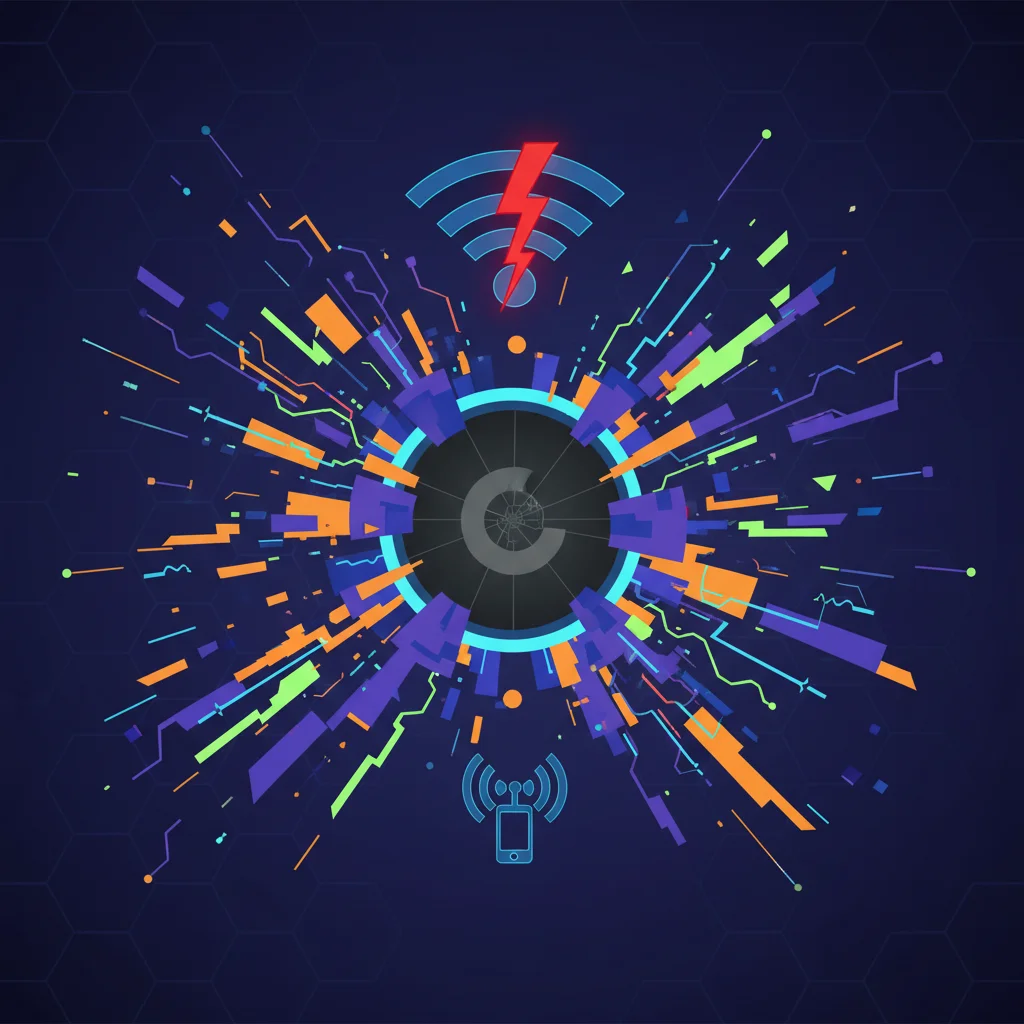
Beyond the Blackout: Vodafone’s Outage and the Hidden Fragility of Modern Software
It’s a feeling we all know too well. You reach for your phone to check an email, stream a song, or join a video call, and… nothing. The Wi-Fi icon has a dreaded exclamation mark. Your mobile data bars are gone. For a few moments, or in some cases hours, you’re cut off from the digital world. This was the reality for thousands of Vodafone customers on a recent Monday when a major outage knocked out broadband and mobile data services.
The culprit? According to a statement from the company, it was a “non-malicious software issue”. While that phrase might sound reassuringly bland, for anyone in the tech industry—from developers and IT professionals to startup founders and entrepreneurs—it’s a chillingly familiar explanation that papers over a universe of complexity, risk, and potential disaster. This wasn’t just a blip for a single telecom giant; it was a stark reminder of the intricate, often fragile, software foundations upon which our entire connected society is built.
In this deep dive, we’ll unpack what a “software issue” truly means in today’s tech landscape, explore the astronomical costs of downtime, and discuss how innovations in artificial intelligence, automation, and cloud architecture are becoming essential tools to prevent the next digital blackout.
What a “Non-Malicious Software Issue” Really Means
The term “non-malicious software issue” is a piece of carefully chosen corporate communication. It effectively says, “We weren’t hacked, but something we built broke.” While it rules out a direct cybersecurity attack, it opens a Pandora’s box of potential internal causes. In the world of modern software development and operations, this could mean anything from a single line of bad code to a catastrophic failure in a complex, distributed system.
Let’s break down some of the likely culprits hiding behind that generic phrase:
- A Flawed Deployment: In the age of Continuous Integration/Continuous Deployment (CI/CD), new code is pushed to production environments constantly. A seemingly minor update—a bug fix, a new feature—could have an unforeseen interaction with another part of the system, causing a cascading failure. This highlights the critical importance of robust testing and phased rollout strategies in programming and DevOps.
- Configuration Drift: Modern infrastructure is often managed as code (IaC) in the cloud. A manual change to a server configuration, a misplaced value in a settings file, or an expired security certificate can cause services to fail. These small errors can ripple through the system with devastating effect.
- Third-Party Dependency Failure: No company builds everything in-house. Modern applications are assembled from a mix of proprietary code, open-source libraries, and third-party SaaS (Software as a Service) APIs. If a critical service that your system relies on goes down, your service goes down with it.
- Database Disasters: A database migration gone wrong, a corrupted index, or a query that unexpectedly consumes all available resources can bring an entire network to its knees. Data is the lifeblood of modern services, and its mishandling is a common source of major outages.
The key takeaway is that our digital infrastructure is no longer a simple, monolithic structure. It’s a dizzyingly complex ecosystem of interconnected services, and a failure in one tiny component can trigger a system-wide collapse.
The Staggering Financial and Reputational Cost of Downtime
For the end-user, an outage is an inconvenience. For a business, it’s a financial catastrophe. The costs extend far beyond the immediate loss of service. They encompass lost productivity, damage to brand reputation, customer compensation, and the immense operational cost of scrambling to diagnose and fix the problem.
Recent industry research paints a grim picture of the financial impact. A 2021 survey by the Information Technology Industry Council found that for Fortune 1000 companies, a single hour of server downtime can cost over $100,000, with some estimates for critical applications reaching between $300,001 to over $5 million, depending on the industry and scale of the operation.
To put this into perspective, here’s a look at the estimated average cost of one hour of downtime across various sectors, where reliance on digital infrastructure is absolute.
| Industry Sector | Estimated Average Cost per Hour |
|---|---|
| Financial Services & Banking | $1,000,000+ |
| Telecommunications | $950,000 |
| E-commerce & Retail | $650,000 |
| Manufacturing | $500,000 |
| Healthcare | $450,000 |
Note: These figures are estimates and can vary widely based on company size, time of day, and the specific services affected.
For startups and small businesses, the stakes are even higher. They don’t have the financial cushion or brand loyalty of a massive corporation. A significant outage can be an extinction-level event, eroding customer trust at a critical stage of growth.
Taming Complexity with AI and Intelligent Automation
If growing complexity is the problem, then advanced technology must be the solution. The scale of modern IT infrastructure has surpassed the ability of human teams to effectively monitor and manage it alone. This is where artificial intelligence and machine learning are transitioning from buzzwords to mission-critical tools for survival.
The field leading this charge is AIOps (AI for IT Operations). AIOps platforms are designed to ingest massive volumes of data—server logs, network traffic, application performance metrics, user activity—and use machine learning algorithms to find the signal in the noise. Instead of waiting for a system to fail, AIOps aims to prevent the failure altogether.
Here’s how this new wave of innovation is changing the game:
- Predictive Analytics: AI models can be trained to recognize the subtle precursors to an outage. A slight increase in memory usage, a minor rise in network latency, a strange pattern in application logs—these are anomalies that a human might miss but that a machine learning algorithm can flag as a potential impending failure, giving engineers time to intervene.
- Intelligent Alerting & Root Cause Analysis: During an outage, IT teams are often flooded with thousands of alerts from different systems, making it nearly impossible to find the source of the problem. AIOps correlates these alerts, filters out the noise, and pinpoints the likely root cause in minutes rather than hours. According to a report by Research and Markets, the global AIOps platform market is expected to grow to over $9.4 billion by 2027, a testament to its growing importance.
- Automated Remediation: The ultimate goal is to create self-healing systems. When an AIOps platform detects a common issue (like a server running out of disk space or a memory leak), it can trigger an automated workflow to fix it—restarting a service, scaling up resources, or rolling back a faulty deployment—all without human intervention. This is the pinnacle of automation in IT operations.
Actionable Lessons for Every Tech Leader and Startup
The Vodafone outage isn’t just a cautionary tale; it’s a curriculum. Whether you’re a CTO at a large enterprise or a founder of a two-person startup, there are critical lessons to be learned and applied to your own operations.
- Embrace Chaos Engineering: Don’t wait for things to break. Proactively inject failure into your systems in a controlled way to identify weaknesses before they cause a real outage. Netflix’s Chaos Monkey is the most famous example of this philosophy in action.
- Invest in True Observability: It’s no longer enough to just monitor your systems. You need observability—the ability to ask arbitrary questions about your system’s state without having to know what to look for ahead of time. This means going beyond basic metrics and investing in comprehensive logging, tracing, and metric aggregation tools.
- Build a Culture of Resilience: Technology is only part of the solution. Your team’s culture is paramount. Foster an environment where blameless post-mortems are the norm, where learning from failure is prioritized, and where every engineer feels responsible for the stability of the entire system.
The Future is Automated and Resilient
As we become ever more reliant on digital services, the tolerance for downtime will continue to shrink. The Vodafone incident serves as a powerful reminder that the complexity of our underlying software is a double-edged sword. It enables incredible innovation, but it also creates new and unpredictable avenues for failure.
The path forward isn’t to retreat from this complexity, but to manage it with smarter, more powerful tools. The future of reliable digital infrastructure lies in the intelligent synthesis of robust programming practices, resilient cloud architectures, and the predictive power of AI and automation. The question every leader in technology should be asking themselves today is not *if* their own “non-malicious software issue” will happen, but whether they have the foresight and the systems in place to handle it when it does.


